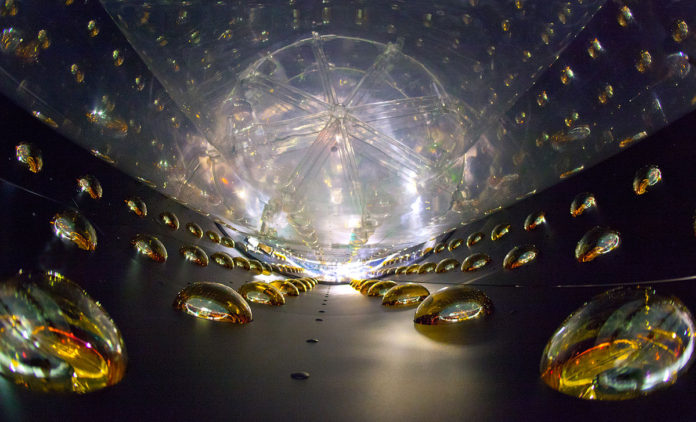A huge international team, known as the T2K Collaboration, is working to explain the behavior of matter in the Universe. The team is comprised of 500 scientists, representing 11 nations and 63 institutions all cooperating in an effort to study the most abundant, yet mysterious, particle in the matter: the neutrino.
In order to understand the behavior of neutrinos, the T2K Collaboration beams the little-understood particles and its opposite, antineutrinos, between the J-PARC laboratory in Tokai on Japan’s east coast, north of Tokyo, to the Super-Kamiokande detector in Kamioka 183 miles (295 km) away in western Japan. Researchers hope that eventually, the experiment may explain the existence of matter.
Because every particle has an equal antiparticle, theoretically matter should not exist as the two should cancel each other out. Despite this, the matter continues to exist over antimatter. The latest results from the T2K experiment brings scientists one step closer to explaining this mystery.
When studying the oscillations between the three ‘flavor’ types of neutrinos and antineutrinos, T2K researchers found that more electron neutrinos appeared then electron antineutrinos, suggesting a difference in behavior never before seen.
Although these results need further testing for confirmation, it is a promising finding much earlier than researchers expected.
The additional testing will have to wait as the Super-Kamiokande detector is being upgraded to the Hyper-Kamiokande, which will be able to detect significantly more neutrinos with more precision and accuracy. Once the upgrades are completed, the experiment can be run a new and will hopefully confirm the neutrino-antineutrino asymmetry that may lead to a new understanding of basics physics.
Article Published @ Imperial College
More News to Read
- New Hydrogel Material Could Help Tissue Repair After Stroke
- New Bacterium Discovered That Can Nucleate Ice
- Does the Answer to Better Patient Care Lie in Machine Learning?
- MAG-LEV Audio: Futuristic Technology Meets an old Format
- New Grant Allocated to Imperial College Professor to Research Incurable Lung Disease

